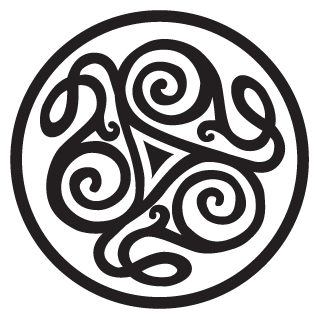Lucid Dream or Out of Body Experience?
Lucid Dream (digitally altered detail from orginal painting)
Altered States of Consciousness
In the Western world, we are accustomed to regarding normal, waking consciousness as the most significant and only ‘real’ experience. Yet, even within waking consciousness, we drift in and out of many different neurological states. Beyond our waking reality, countless other states of consciousness exist, creating an overlapping network of extraordinary experiences.
In The Shamanic Journey, Roger Walsh raises the analogous connection between shamanic journeying, out of body experiences (OBEs) and lucid dreaming. There are many commonalities in these states and separating them into entirely different categories may not be possible. Interpretations of these experiences are also heavily influenced by culture and worldview.
Shamanic States of Consciousness
Many indigenous cultures regard altered states of consciousness as indistinct from dreaming. In his study of Nepalese and Mayalsian tribes, Riboli discusses how shamans reported transitioning from an OBE into a lucid dreaming state, which then provided a gateway to another reality where they could assume the form of a tiger. Walsh posits that OBEs, near death experiences, and lucid dreaming may have been precursors to the development of shamanic journeying. Spontaneous glimpses of alternate realities, receiving information that is inaccessible to the everyday mind, and transcending the capabilities of the physical body are often features of altered states. It is easy to see why people from all cultures, throughout millennia, would have been motivated to seek out these experiences.
Shamanic Journey - Monoprint
Dreaming and Out of Body Experiences
The possibility that dreams and out of body experiences (OBEs) could be the same phenomenon is raised by Levitan & LaBerge. Their research demonstrated a correlation between lucid dreaming, sleep paralysis and OBEs. In Waking, Dreaming, Being, Thompson also relates a personal account of how he managed to “create a strong sense of a second body” when entering a dream state and experiencing sleep paralysis. However, many differences between lucid dreams and OBEs are evident. The sense of disembodiment and disassociation that is repeatedly reported in OBEs, does not seem as prevalent in reports from lucid dreamers. As Levitan & LaBerge point out, lucid dreamers are aware of being in a dream state, whereas the OBEr feels like they are floating out of their body in physical reality. They theorise that losing connection with bodily sensory input could induce this feeling of floating. Although experiences resembling both OBEs and lucid dreaming have been induced by electrical stimulation in the brain (see Thompson, 2015; Stumbrys et al., 2013), both studies highlighted limitations, and the effects were not as pronounced as those experienced in a spontaneous OBE or lucid dream.
Gateways to Multiple Realities
“There’s a whole other reality, and there are different entrances into it.”
Controversy and conflicting evidence on whether lucid dreaming and OBEs are interchangeable have existed for decades. Perhaps, as Michael Harner puts it, “there’s a whole other reality, and there are different entrances into it.” In the Western paradigm, it is normal to seek definitive answers but it seems likely that, to fully investigate other states of consciousness, it is necessary to become more comfortable with paradox.
References
Harner, M. (2005). Tribal wisdom: The shamanic path. In R. Walsh and C. Grob (Eds.), Higher wisdom: Eminent elders explore the continuing impact of psychedelics. State University of New York Press.
Levitan, L. & LaBerge, S. (1991). Other worlds: Out-of-body experiences and lucid dreams. Nightflight, 3, 2-3. http://www.lucidity.com/NL32.OBEandLD.html
Riboli, D. (2014). Dreamed violence and shamanic transformation in indigenous Nepal and Malaysia. In R. Hurd & K. Bulkeley (Eds.), Lucid dreaming: new perspectives on consciousness and sleep. Praeger.
Stumbrys, T., Erlacher, D., & Schredl, M. (2013). Testing the involvement of the prefrontal cortex in lucid dreaming: A tDCS study. Consciousness and Cognition, 22(4), 1214-1222.
Thompson, E. (2015) Waking, dreaming, being: Self and consciousness in neuroscience, meditation and philosophy. Columbia University Press.
Walsh, R. (1989) The shamanic journey: experiences, origins and analogues. ReVision, 12(2), 25-32.


